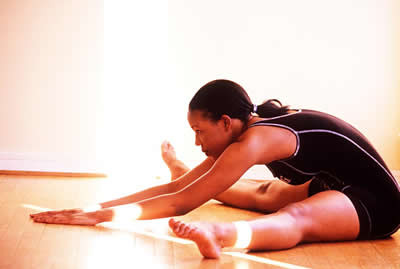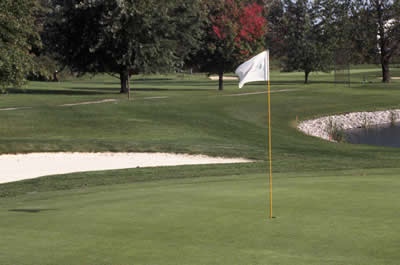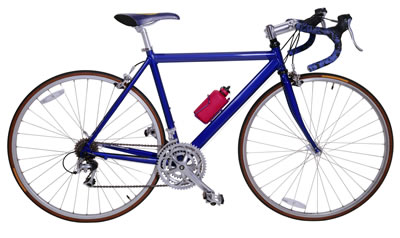Yoga Participation Jumps Again in 2010; Team Sports Show Some Growth
|

Yoga, which grew 20.9% in 2009 and 21.9% in 2008, continued its explosion in 2010 with an increase of 28.1%. Data in NSGA's annual "Sports Participation - Series I and II" reports, now made available, shows yoga with 20.2 million participants in 2010, an increase of 28.1% compared to 15.7 million in 2009.
Among traditional team sports, gymnastics led with a big participation increase of 23.5% to 4.8 million. Ice hockey continued to increase, up 7.9% in 2010 to 3.3 million. Basketball participation was up 10.1% to 26.9 million; tackle football up 4.8% to 9.3 million; and baseball up 8.9% to 12.5 million. That contrasts with 2009 decreases in basketball (5.0%), tackle football (6.2%), and baseball (13.5%). In contrast, softball was down 8.4% in 2010 and 7.9% in 2009. Team sports that showed only slight decreases in 2010 were soccer, down 0.3%; volleyball, down 1.0%; and wrestling, down 0.9%. Lacrosse, surveyed for the first time, had 2.6 million participants.
Among sports and activities with 10 million or more participants, the overall percentage leader was aerobic exercising, which showed a 16.3% increase (38.5 million participants). Tennis (12.3 million) showed a 13.2% increase, followed by hiking (37.7 million), 10.9%, running/jogging (35.5 million), 10.3%, bicycle riding (39.8 million), 4.3%, and swimming (51.9 million), 3.4%. Fishing showed a slight increase up 2.8% to 33.8 million as did exercise walking, up 2.6% to 95.8 million.
In activities with fewer that 10 million participants in 2010, kayaking (5.6 million) led with a 14.8% increase over 2009. Water skiing (5.2 million participants) was nearly flat with a 0.6% increase.
Click here for a chart of overall participation numbers for the sports surveyed.
For this survey, a participant is someone age seven or older who takes part in the sport or activity more than once in a calendar year. "Sports Participation in 2010 -- Series I and II" cover 45 sports, recreation and fitness activities.
These reports have been published by NSGA for more than 25 years. They provide data on total 2010 participation, frequency of participation, and mean (average) and median (mid-point) number of participation days. Single-time participation, which is not counted in the total, is included separately.
Demographic data on participants includes gender, age, mean and median age by gender, gender by age, household income, and education of male and female head of household. Geographic analysis includes nine census regions and metro area size. Presence of children is also noted.
Note: The 2010 studies were conducted using an online survey methodology. Prior to 2010, the studies were conducted using a mailback methodology.
For more information and/or pricing for these and other NSGA research reports, please contact the NSGA Research Department, (847) 296-6742, ext. 108, or e-mail: dkasen@nsga.org. Information is also available on the NSGA web site at 2011 Research Brochure & Order Form.
|
April CPI for Sporting Goods is Negative Again
|

CPI for sporting goods continued in negative territory. The index fell 3.8% in April after a 4.1% decrease in March. In February, it also declined 3.4% and in January, 4.1%. The last time that the CPI for sporting goods was positive was in October 2009.
The CPI for All Items, which remained positive in April 2011 and had remained there since November 2009, rose 2.9% in April. This comes after a rise of 2.7% in March and 2.1% in January.
For 2010, the Sporting Goods CPI averaged a 3.0% decrease following a 2.1% increase in 2009. In 2010, the CPI for sporting goods did not have a positive month.
For 2009, the Sporting Goods CPI averaged a 2.1% increase following a 2.3% increase in 2008. These are the first years since 2004 that the Sporting Goods CPI has shown a positive change from the previous year.
In the past five years (2010 versus 2005), the Sporting Goods CPI average has fallen 2.5% in the face of a 14.5% rise in the CPI for All Items.
|
April Weather, Abysmal Season Start for Northern Climates
|

April weather impact was incredibly unfavorable with Golf Playable Hours (GPH) down 21% vs. April 2010 according to Pellucid Corp.'s Weather Impact Tracking Report. This brought the Year-to-Date (YTD) weather impact to -11% vs. one year ago, marking a turn for the worse after being weather-neutral through March.
Regional breadth for the YTD period also swung to the negative at 1.1.3 with 18 regions having favorable weather offset by 24 regions with unfavorable weather (3 in the neutral zone with all 45 regions now "in season" using Pellucid's weather-based rules). The one bright spot in the YTD weather performance is that the poor weather continues to be primarily concentrated in weekdays vs. weekends, with weekend GPH off only 1% offset by dramatically lower weekday GPH of -14% vs. a year ago.
Looking back on March rounds demand as reported by Golf Datatech/NGF to calculate percent Utilization, the other good news is that, despite an unfavorable weather month, rounds held up better than expected causing an increase in the Utilization Rate of 5 pts to 57% for the month (comprised of a 6% decrease in Rounds Played against a 14% decrease in Capacity Rounds). For the YTD period, Utilization registered 54% (comprised of a 4% increase in Rounds Played against flat Capacity Rounds) which is a 2 point increase vs. the 2010 benchmark utilization rate of 53%.
For more specific information on how Pellucid's Weather Impact capabilities answer key business performance questions, including a sample report and pricing, contact Jim Koppenhaver at jimk@pellucidcorp.com.
|
Bike Imports Increase 4% in Units and 41% in Value
|
 Bicycle imports rose 4% through January 2011 year-to-date compared to 2010, according to U.S. Department of Commerce data. Total units imported through January were 980,352 up 37,760 from January 2010. Value of the 2011 imports was $106,228,645 up 41% from $75,258,265 in 2010. Taiwan, with the majority of the increase, was up 86%. Unit imports from Taiwan were 72,415 compared to 38,895 in 2010. Bicycle imports rose 4% through January 2011 year-to-date compared to 2010, according to U.S. Department of Commerce data. Total units imported through January were 980,352 up 37,760 from January 2010. Value of the 2011 imports was $106,228,645 up 41% from $75,258,265 in 2010. Taiwan, with the majority of the increase, was up 86%. Unit imports from Taiwan were 72,415 compared to 38,895 in 2010.
Among adult bikes, imports of mountain and comfort bikes increased 51% to 337,949 units, with a value of $43.1 million, through January.
Imports of 27-inch and 700c bikes increased 66% to 126,417 units (valued at $41.1 million) for the first month of 2011, compared to 76,328 units through January last year.
Average unit value of an imported bicycle jumped by 35.7% for the first month, from $79.84 in 2010 to $108.36 in 2010.
In 2010, 19.77 million bicycles were imported into the U.S., with a value of $1.43 billion. Unit imports increased 33.2%, and their value dropped 1.7%.
In 2009, 14.84 million bicycles were imported into the U.S., with a value of $1.09 billion. Unit imports fell 19.6%, and their value dropped 20.2%.
In 2008, 18.45 million bicycles were imported into the U.S., with a value of $1.37 billion. Unit imports grew 1.9%, while their value soared 21.6%.
|
March Topline Report on Outdoor, Paddlesports, Running, Dive, & Athletic Apparel Up
|

Leisure Trends Group Topline Report provides retail market intelligence to the following industries: Outdoor, Run, Snowsports, Athletic Apparel, Scuba, Dive, Paddle (Canoe and Kayak). All data includes three years of continuous history, and vital measures such as: units sold, dollars spent, average retail selling price, inventory units and dollars, sell-through and retailer margin.
Outdoor Overview: Outdoor retail sales reached $474 million in March, a 13% increase over March 2010. Growth came from all major product categories and across all three outdoor channels. With tents, bags, packs, and, climbing equipment all gaining, outdoor equipment dollars increased 7%. Equipment accessory dollars grew 10% with virtually every subcategory experiencing growth. Both apparel and footwear increased a significant 16% in dollars over March 2010.
Paddlesports Overview: Paddlesport dollars fell 9% across all three channels (chain, internet, and specialty) compared to March 2010, for a total $33M at retail. Boats and paddles fell 8% and 2% respectively, in dollars sales from March 2010. Apparel fell 19% while accessories dropped 11%. On a positive note, the popularity of stand-up paddle boarding continued to grow. While coming from a smaller base, stand-up paddle board sales grew 67% in dollars to total $792K in March.
Running Overview: Compared to March 2010, sales at run specialty rose 9% in units and 7% in dollars to total $79M. Footwear, totaling $58M, gained 6% in units and 5% in dollars over the same month last year. Running shoes, 92% of March footwear dollars, improved 3% in both units and dollars. The road running category gained 2% in dollars on the strength of neutral/cushion models, up a solid 18% for the month. Minimalist shoes contributed significant growth in the neutral/cushion category this month.
Dive Overview: All dive merchandise totaled $28M, up 9% from 2010. Dive equipment was down 9% in units and 4% in dollars from last March. Advanced equipment inched up 2% in units but a 1% drop in average retail-selling price kept dollars flat.
Athletic Apparel Overview: All Athletic apparel sales totaled $145M in March, up 11% in dollars with a 10% increase in units from last year. Athletic sportswear jumped 15% in units and 17% in dollars to account for 46% of March athletic apparel dollars. Tops rose and bottoms rose 15% and 18% respectively. Stand out sportswear categories this March include bra tops, up 30%, long sleeve shirts, up 48%, and sleeveless shirts, up 55%.
Leisure Trends Group - LTG provides consumer research, retail market intelligence (retail sales tracking) and integrated CRM/Direct Marketing services for the sports, recreation, hospitality, travel and entertainment industries. Leisure Trends Group is headquartered in Boulder, Colorado. For more information, contact Julia Day at jday@leisuretrends.com or visit www.leisuretrends.com.
|
|